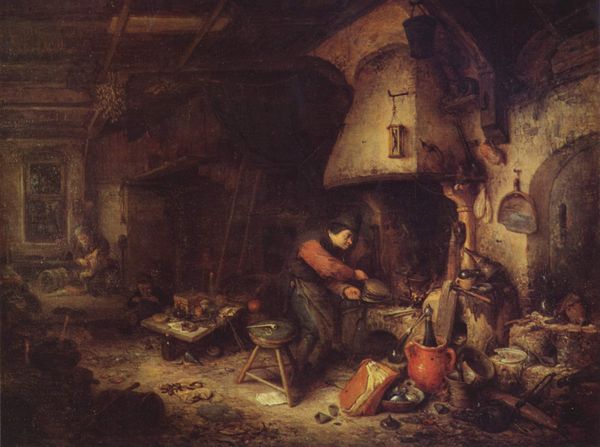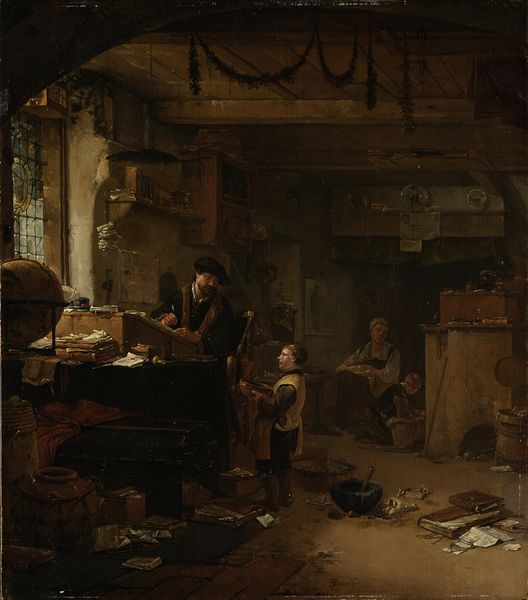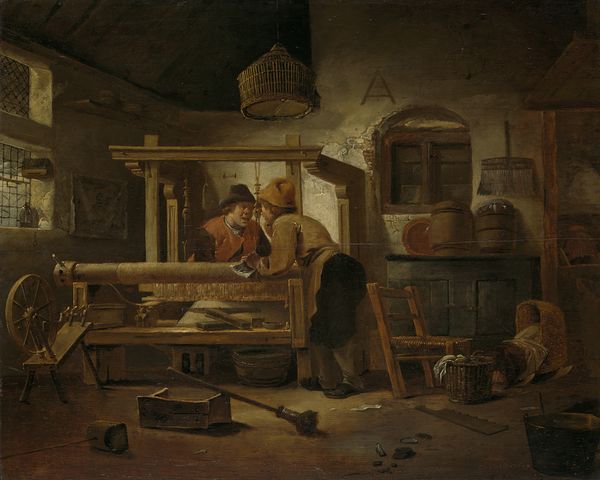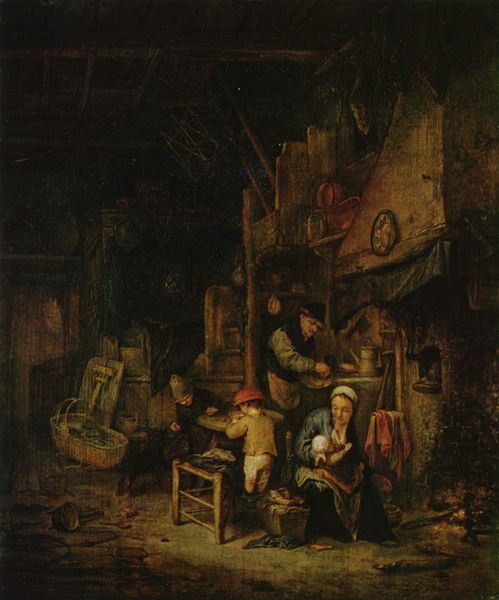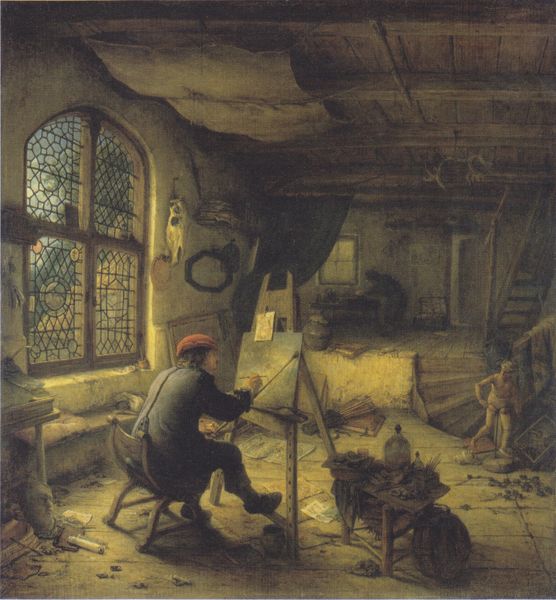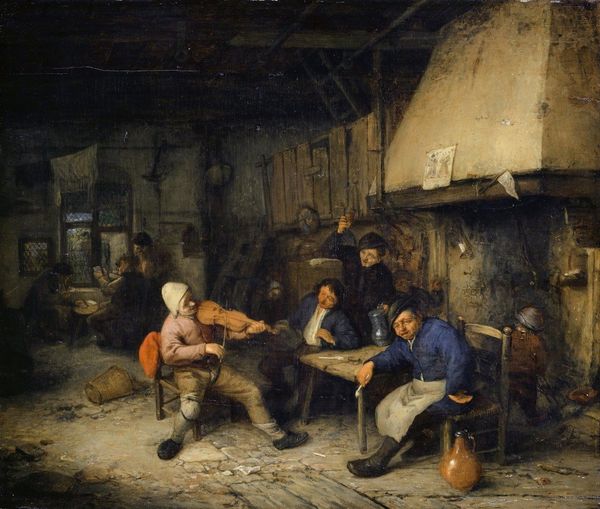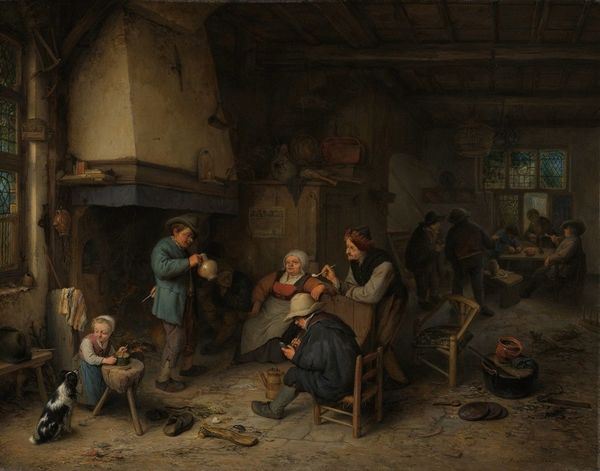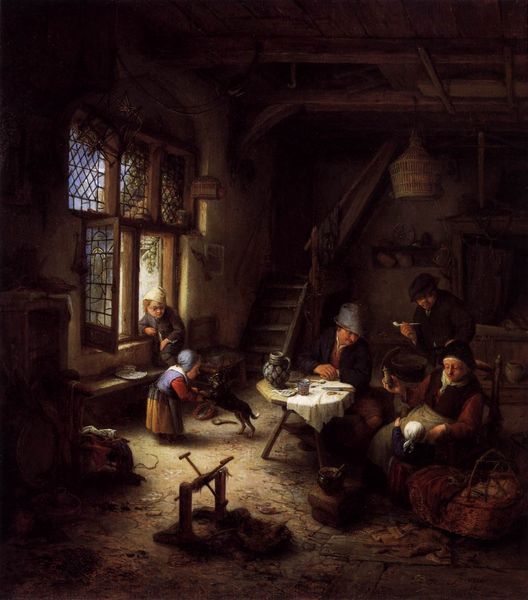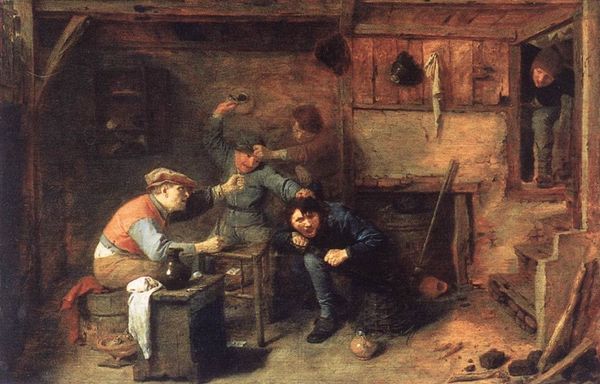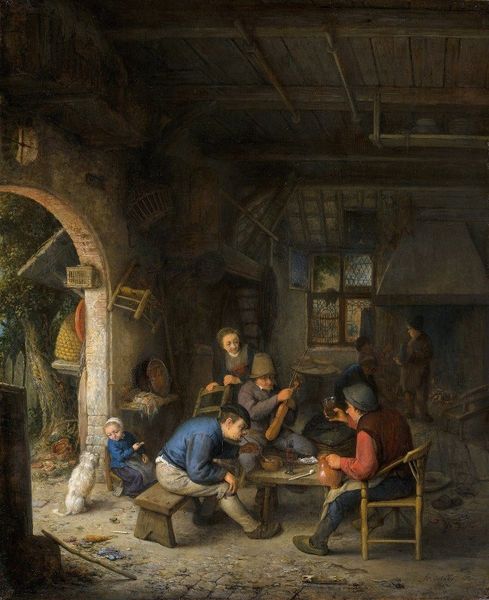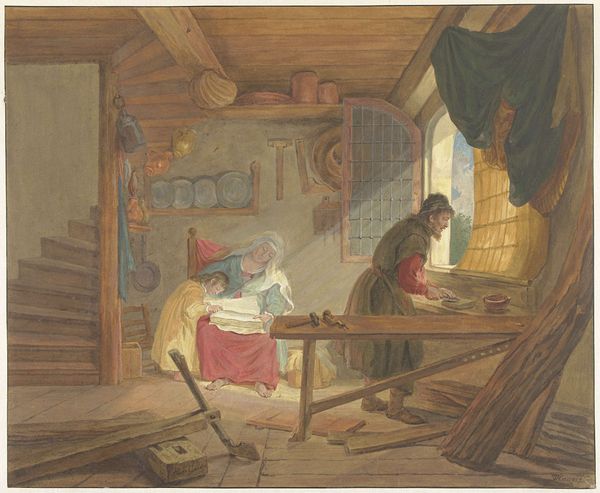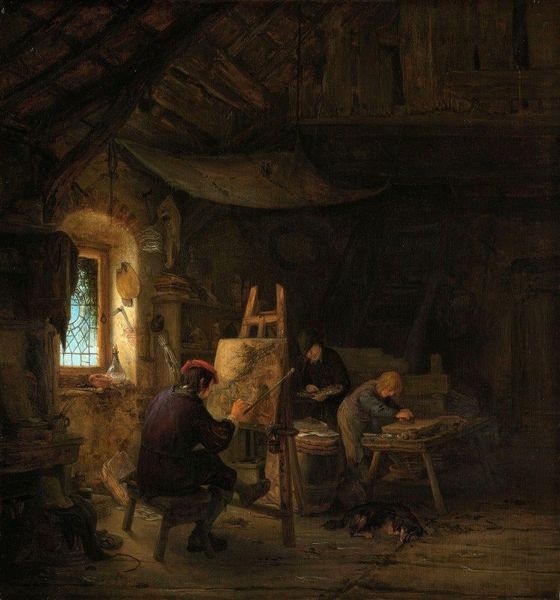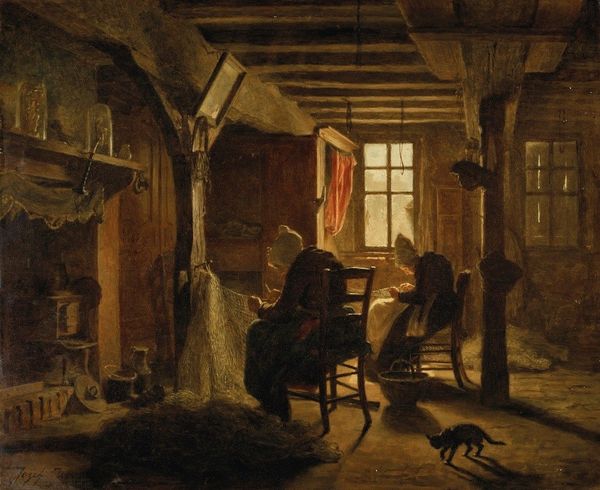
painting, oil-paint
#
figurative
#
dutch-golden-age
#
painting
#
street view
#
oil-paint
#
painted
#
figuration
#
painting painterly
#
genre-painting
#
realism
Copyright: Public Domain: Artvee
Editor: Here we have Adriaen van Ostade's "Interior with Peasants," painted in 1663, using oil paints. Looking at this artwork, what strikes me is the everyday-ness of it all, the raw and unfiltered snapshot of peasant life. There's almost a fly-on-the-wall feel to it. How do you read it? Curator: I see a fascinating document of its time, reflective of the burgeoning Dutch Golden Age and its complex relationship with representations of the working class. While the era witnessed unprecedented economic growth and artistic innovation, it also harbored deep social stratification. Genre paintings like this weren't simply neutral depictions, but active participants in shaping perceptions. Editor: So, it wasn't just a mirror, but also a shaper of views? Curator: Precisely! Consider who was commissioning and viewing these paintings: wealthy merchants, members of the elite. Paintings like these allowed them a glimpse into, and perhaps a sense of superiority over, the lives of the lower classes. Ostade, like many of his contemporaries, presented a carefully constructed reality, emphasizing aspects that would appeal to his patrons. Look at the details – are we invited to sympathise with these people, or perhaps see them as objects of curiosity, or even mockery? Editor: That’s a point I hadn’t considered before! The untidiness could be seen as charming, or…othering. What would that mean for how these images were perceived then and now? Curator: Well, contemporary viewers, like us, often bring our own socio-political lenses to interpreting the art. What strikes you as raw, might have reinforced social hierarchies. As the painting travels through time, each interpretation will shift its perceived cultural value. This continuous re-evaluation ensures the continued visibility of art. Editor: It is fascinating how much these depictions of daily life, thought of as 'realism' back then, actually reinforce and reflect existing societal biases and viewpoints. Curator: Exactly. These are powerful visual arguments, deeply rooted in the culture and the institutional structures of their era. They force us to acknowledge that art can never be viewed separately from its political environment. Editor: So true. It goes far beyond a simple, pretty scene. I’ll never look at these paintings the same way again. Curator: I think it's the role of cultural artifacts like these to ask a lot more from us than simple aesthetic value.
Comments
No comments
Be the first to comment and join the conversation on the ultimate creative platform.
